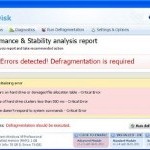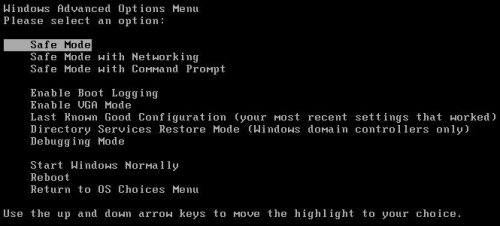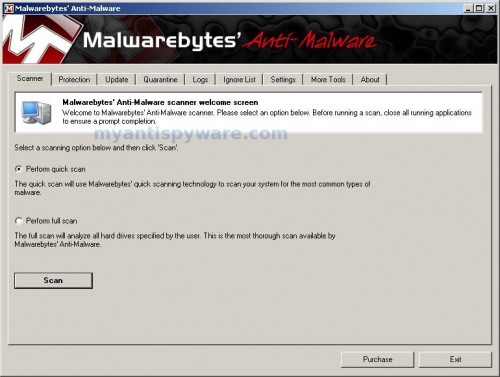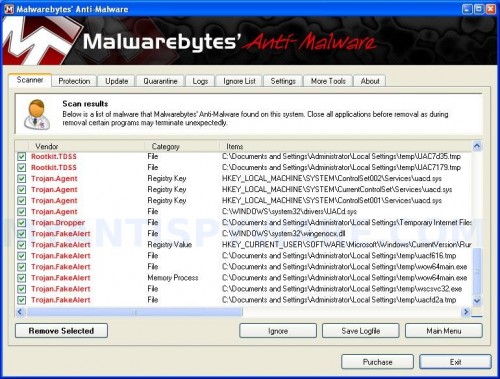 My Disk is a fake hard disk defragmenter software. The program displays false information and reports a lot of fake errors that states you have some serious problems (memory errors, hard drive errors, bad sectors, etc). MyDisk will say that all you have to do in order to fix these problems and errors is purchase its license. Do not pay for the fake hard disk “repair” tool because it is nothing more but a scam which is unable to detect and fix any problems!
My Disk is a fake hard disk defragmenter software. The program displays false information and reports a lot of fake errors that states you have some serious problems (memory errors, hard drive errors, bad sectors, etc). MyDisk will say that all you have to do in order to fix these problems and errors is purchase its license. Do not pay for the fake hard disk “repair” tool because it is nothing more but a scam which is unable to detect and fix any problems!
My Disk from same family of malware as HDD Fix, Quick Defragmenter, Defragmenter, etc. Like other rogues, it is distributed with the help of trojans and installed onto your PC without your permission and knowledge so, you do not even notice that. Moreover, cyber criminals may also distribute MyDisk via Twitter, My Space, Facebook and spam emails . Please be careful when opening attachments and downloading files or otherwise you can end up with a rogue program on your computer. Important to note, the rogue is a highly dangerous application and you need remove My Disk as soon as possible!
When the fake defragmenter is installed, it will perform a scan and “detect” 11 critical errors. Some of the fake errors are: “Read time of hard drive clusters less than 500 ms”, “32% of HDD space is unreadable”, “Bad sectors on hard drive or damaged file allocation table”, etc. Next, the program will ask you to pay for the fake software before it “repairs” your machine of the problems. Remember, the scan might look legitimate but, in reality, MyDisk only imitates the actions of an ordinary hdd defragmenter tool and does not do anything to the system! So, you can safety ignore all that My Disk gives you.
My Disk will block all legitimate Windows applications, including Internet Explorer and security tools, by shutting down programs every time they are opened. Instead, it will display the following fake warning:
Windows detected a hard drive problem.
A hard drive error occurred while starting the application
Moreover, this malware will display various fake alerts. The alerts are similar to the ones listed below:
System Restore
The system has been restored after a critical error. Data integrity and hard drive integrity verification required.
Windows – No Disk
Exception Processing Message 0×0000013
Critical Error
A critical error has occurred while indexing data stored on hard drive. System restart required.
Just like false scan results above, all of these alerts are a fake and supposed to scare you into thinking your computer is in danger. You should ignore all of them!
As you can see, all the program does is fake and you should stay away from the malicious application! If your PC has been infected with the rogue, then ignore all it gives you and follow the removal instructions below in order to remove My Disk and any associated malware from your computer for free.
Automated Removal Instructions for My Disk
Step 1. Reboot your computer in Safe mode with networking
Restart your computer.
After hearing your computer beep once during startup, start pressing the F8 key on your keyboard. On a computer that is configured for booting to multiple operating systems, you can press the F8 key when the Boot Menu appears.
Instead of Windows loading as normal, Windows Advanced Options menu appears similar to the one below.

Windows Advanced Options menu
When the Windows Advanced Options menu appears, select Safe mode with networking and then press ENTER.
Step 2. Stop My Disk from running
Download HijackThis from here. Run HijackThis and click Scan button to perform a system scan. Place a checkmark against each of lines:
O4 – HKCU\..\Run: [{RANDOM}.exe] {PATH}\Temp\{RANDOM}.exe
O4 – HKCU\..\Run: [{RANDOM}] {PATH}\Temp\{RANDOM}.exe
Example:
O4 – HKCU\..\Run: [AvdCEPoYRb.exe] C:\Users\User\AppData\Local\Temp\AvdCEPoYRb.exe
O4 – HKCU\..\Run: [1040368] C:\Users\User\AppData\Local\Temp\1040368.exe
Note: list of infected items may be different. Template of the malicious entries:
Variant 1: [{random string}] {PATH}\Temp\{random string}.exe;
Variant 2: [{set of random numbers}] {PATH}\Temp\{set of random numbers}.exe;
If you unsure, then check it in Google. Skip this step, if you does not find any malicious lines.
Place a checkmark against each of them. Once you have selected all entries, close all running programs then click once on the “fix checked” button. Close HijackThis.
Step 3. Clean temp folder
MyDisk stores its files in Windows temp foder. You need to clean it.
Please download ATF Cleaner by Atribune from here, saving it to your desktop. It is used to cleanout temporary files & temp areas used by internet browsers.
Start ATF-Cleaner.exe to run the program. Under Main choose: Select All and click the Empty Selected button.
Step 4. Remove My Disk associated malware
Download MalwareBytes Anti-malware (MBAM). Close all programs and Windows on your computer.
Double Click mbam-setup.exe to install the application. When the installation begins, keep following the prompts in order to continue with the installation process. Do not make any changes to default settings and when the program has finished installing, make sure a checkmark is placed next to Update Malwarebytes’ Anti-Malware and Launch Malwarebytes’ Anti-Malware, then click Finish.
If an update is found, it will download and install the latest version.
Once the program has loaded you will see window similar to the one below.

Malwarebytes Anti-Malware Window
Select Perform Quick Scan, then click Scan, it will start scanning your computer for My Disk infection. This procedure can take some time, so please be patient.
When the scan is complete, click OK, then Show Results to view the results. You will see a list of infected items similar as shown below. Note: list of infected items may be different than what is shown in the image below.

Malwarebytes Anti-malware, list of infected items
Make sure all entries have a checkmark at their far left and click “Remove Selected” button to remove My Disk. MalwareBytes Anti-malware will now remove all of associated MyDisk files and registry keys and add them to the programs’ quarantine. When MalwareBytes Anti-malware has finished removing the infection, a log will open in Notepad and you may be prompted to Restart.
My Disk removal notes
Note 1: if you can not download, install, run or update Malwarebytes Anti-malware, then follow the steps: Malwarebytes won`t install, run or update – How to fix it.
Note 2: if you need help with the instructions, then post your questions in our Spyware Removal forum.
Note 3: your current antispyware and antivirus software let the infection through ? Then you may want to consider purchasing the FULL version of MalwareBytes Anti-malware to protect your computer in the future.
My Disk creates the following files and folders
%UserProfile%\Desktop\My Disk.lnk
%UserProfile%\Start Menu\Programs\My Disk\My Disk.lnk
%UserProfile%\Start Menu\Programs\My Disk\My Disk.lnk
%Temp%\{RANDOM}.exe
%Temp%\{RANDOM}
%Temp%\{RANDOM}.dat
My Disk creates the following registry keys and values
HKEY_CURRENT_USER\Software\Microsoft\Windows\CurrentVersion\Run | {RANDOM}












One of my PC’s got this today, probably from a compromised website.
In addition to the above:
I had to manually remove the registry entry and desktop item. The exe does not appear to still be there.
I found the random name by checking the windows task manager for a cpu hog that didn’t make sense.
Win XP Pro
Avira AV – Free version
thanks a lot for this very helpful instruction. It was the only one which eliminated this virus. I also used the avira guard but it didn’t alert the infection. Same as Chuck V i had to remove the desktop item.